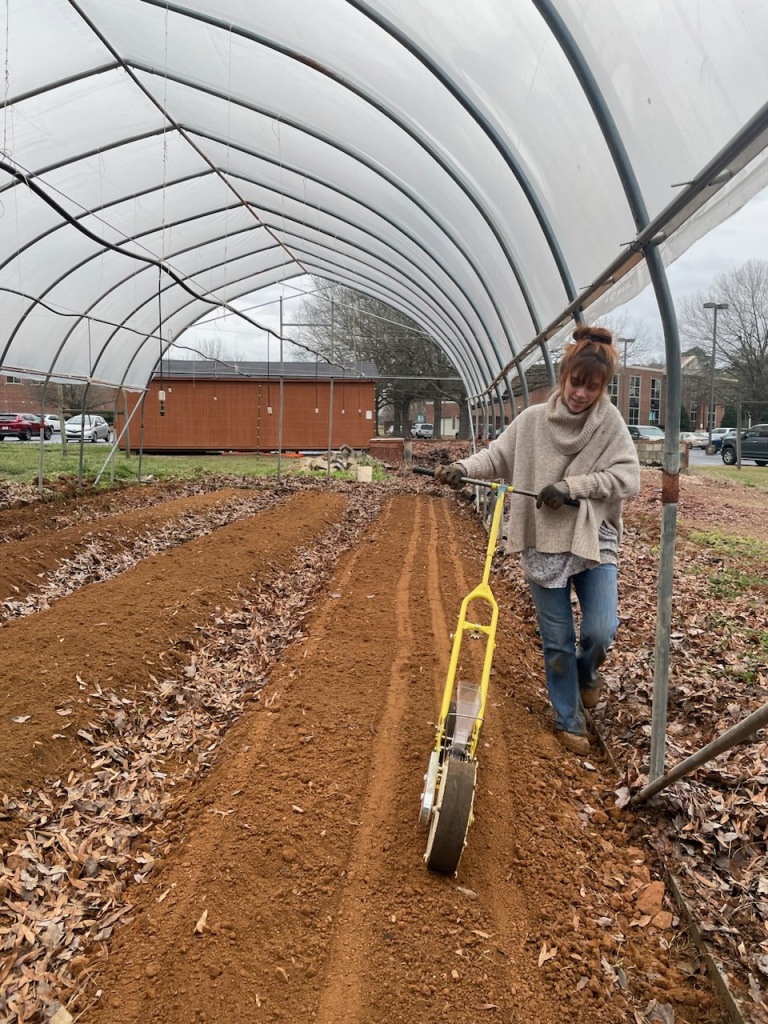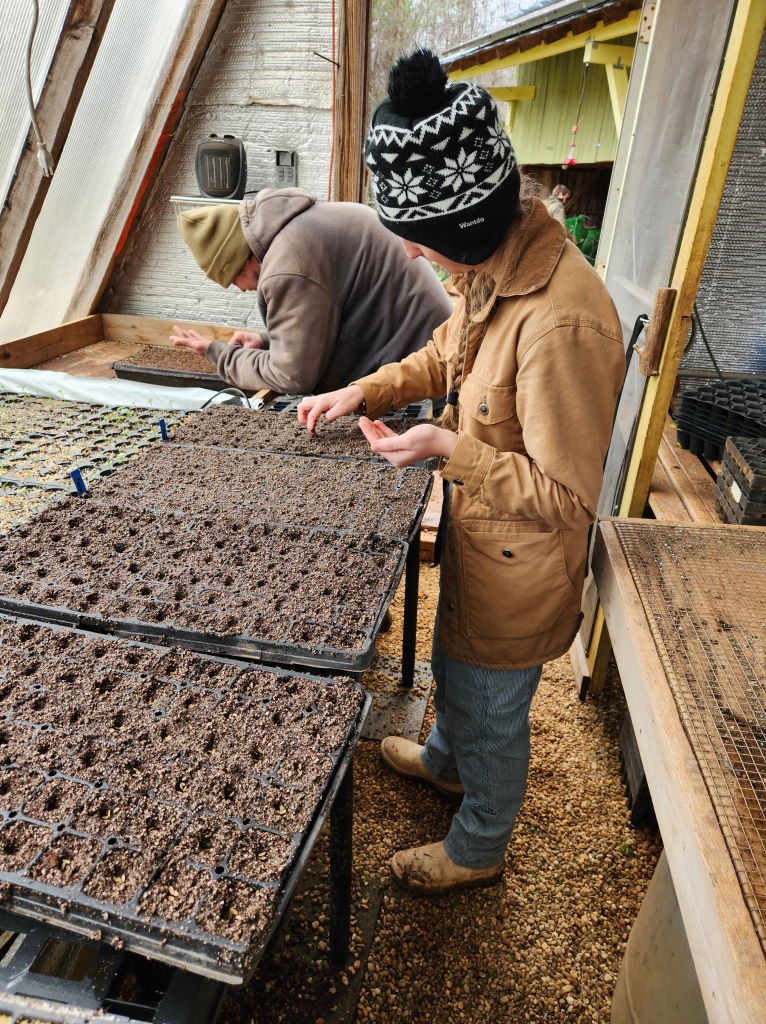Last semester was unusually dry, and so far for this semester it is a total 180! This week and last week our Advanced Organic Crop Production class worked through the gloomy weather on the student farm in preparation for the spring CSA. Tools were cleaned and sharpened, beds have been prepared, and seeds have been sown.
Farrell showed this class a great way to propagate “free” sweet potato slips from existing sweet potatoes. We divided up into three teams; a team to cut up cardboard into a foldable box for this method, a team to process and gather up leaf mould, and a third team to start covering another hoop house for future rainy day farming.
The sweet potato propagation method starts with cutting up leaf mould, or composted leaves, as finely as possible. In our case, Farrell safely demonstrated how he accomplishes this by putting the leaf mould in a wheelbarrow and using a string trimmer to cut the leaves up. Next, we sieved the cut up leaves through a fine mesh and the smaller particles are used in the propagation process. In this process we combine peat and the sieved cut up leaves as a soil medium for the sweet potatoes to lay in. We use these two materials because their retain just enough moisture to encourage rooting and sprouting without getting waterlogged or too dry. Then after one team cut up the cardboard to make the boxes for propagation, we staple the cardboard into shape and place them in a strong support tray which are usually used for seed trays. The soil medium and the sweet potatoes are then placed in the boxes, and these boxes are kept on heat mats until the sprouts appear. A pretty slick way to get slips without having to buy them every year!

Hailey seeding green onions in one of our covered hoop houses using a Jang seeder.
These two weeks have been a great push towards our CSA in the Spring as we prep and hope to have produce as early mid March ready for harvest. In the picture above, the Advanced Organic Crop Production class weeded, built beds, and seeded the beds all with hand tools and hard work. Hand weeding throughout the whole production area as well as digging up the soil bordering the beds and touching the bottom of the hoop house to reduce the likelihood of weeds spreading into the beds. We also added leaves into the walkways in between the beds for the same reason.

Mikaela and Stetson seeding lettuce and fennel.
On the day of the picture above the class split up into three groups to accomplish different tasks across the farm. The duo pictured above mixed up a wheelbarrow of seed starting soil mix and started up 15 trays of various winter hardy crops. The other two groups were divided into builders and harvesters. The builders built covered hoops to protect the strawberries as they enter their second year of production. While the harvesters brought the rest of the group heads of lettuce and escarole from our hoop house with leafy greens to sample.
Even with the cold, rainy days we have experienced the past two weeks, the farm is as abundant as ever. Through our diligence and management of the farm, we can always find work on the farm and ways to grow great organic vegetables and fruit!
━ Charlie V.